
This article relates to the flora of New Zealand, especially indigenous strains. New Zealand's geographical isolation has meant the country has developed a unique variety of native flora. However, human migration has led to the importation of many other plants as well as widespread damage to the indigenous flora, especially after the advent of European colonisation, due to the combined efforts of farmers and specialised societies dedicated to importing European plants & animals.

Betula pendula, commonly known as silver birch, warty birch, European white birch, or East Asian white birch, is a species of tree in the family Betulaceae, native to Europe and parts of Asia, though in southern Europe, it is only found at higher altitudes. Its range extends into Siberia, China, and southwest Asia in the mountains of northern Turkey, the Caucasus, and northern Iran. It has been introduced into North America, where it is known as the European white birch or weeping birch and is considered invasive in some states in the United States and parts of Canada. The tree can also be found in more temperate regions of Australia.
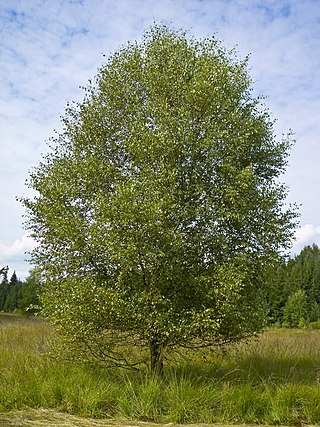
Betula pubescens, commonly known as downy birch and also as moor birch, white birch, European white birch or hairy birch, is a species of deciduous tree, native and abundant throughout northern Europe and northern Asia, growing farther north than any other broadleaf tree. It is closely related to, and often confused with, the silver birch, but grows in wetter places with heavier soils and poorer drainage; smaller trees can also be confused with the dwarf birch.

Sphagnum is a genus of approximately 380 accepted species of mosses, commonly known as sphagnum moss, also bog moss and quacker moss. Accumulations of Sphagnum can store water, since both living and dead plants can hold large quantities of water inside their cells; plants may hold 16 to 26 times as much water as their dry weight, depending on the species. The empty cells help retain water in drier conditions.
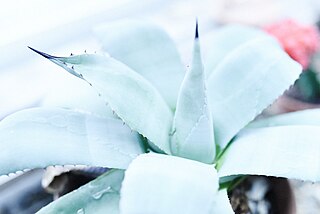
The New Canaan Nature Center is a botanical garden, arboretum and nature preserve located at 144 Oenoke Ridge, Route 124, about 0.25 miles (0.40 km) north of the center of New Canaan, Connecticut.
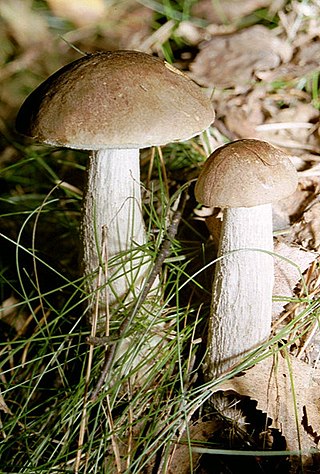
Leccinum scabrum, commonly known as the rough-stemmed bolete, scaber stalk, and birch bolete, is an edible mushroom in the family Boletaceae, and was formerly classified as Boletus scaber. The birch bolete is widespread in Europe, in the Himalayas in Asia, and elsewhere in the Northern Hemisphere, occurring only in mycorrhizal association with birch trees. It fruits from June to October. This mushroom is also becoming increasingly common in Australia and New Zealand where it is likely introduced.

Los Ruiles National Reserve is a small nature reserve located in Cauquenes Province of Maule Region in central Chile. The reserve consists of two sections that protect enclaves of native forest, which are home to several threatened and endangered species.

The Wych Elm cultivar Ulmus glabra 'Horizontalis', commonly known as the Weeping Wych Elm or Horizontal Elm, was discovered in a Perth nursery circa 1816. The tree was originally identified as 'Pendula' by Loddiges (London), in his catalogue of 1836, a name adopted by Loudon two years later in Arboretum et Fruticetum Britannicum, 3: 1398, 1838, but later sunk as a synonym for 'Horizontalis'.

This is a list of taxa comprising the flora of the Antipodes Islands. It includes some species known as megaherbs.

The Field Elm cultivar Ulmus minor 'Propendens', described by Schneider in 1904 as U. glabra (:minor) var. suberosa propendens, Weeping Cork-barked elm, was said by Krüssmann (1976) to be synonymous with the U. suberosa pendula listed by Lavallée without description in 1877. Earlier still, Loudon's Arboretum et Fruticetum Britannicum had included an illustration of a pendulous "cork-barked field elm", U. campestris suberosa. An U. campestris suberosa pendula was in nurseries by the 1870s.
The elm cultivar Ulmus 'Rugosa' [:'wrinkled', the leaves], was first listed in Audibert's Tonelle (1817), as "U. campestris Linn. 'Rugosa' = orme d'Avignon [Avignon elm] ", but without description. A description followed in the Revue horticole, 1829. Green (1964) identified this cultivar with one listed by Hartwig and Rümpler in Illustrirtes Gehölzbuch (1875) as Ulmus montana var. rugosaHort.. A cultivar of the same name appeared in Loddiges' catalogue of 1836 and was identified by Loudon in Arboretum et Fruticetum Britannicum (1838) as Ulmus montana var. rugosaMasters, Masters naming the tree maple-bark elm. Ulmus montana was used at the time both for wych cultivars and for some cultivars of the Ulmus × hollandica group.
The Field Elm cultivar Ulmus minor 'Microphylla Pendula', the Weeping small-leaved elm, was first listed by the Travemünde nursery, Lübeck, and described by Kirchner in Petzold & Kirchner's Arboretum Muscaviense (1864), as Ulmus microphylla pendulaHort.. By the 1870s it was being marketed in nurseries in Europe and America as Ulmus campestris var. microphylla pendula.
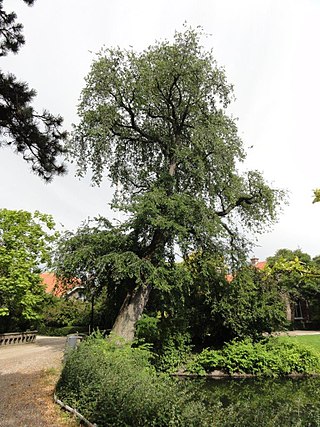
The Field Elm cultivar Ulmus minor 'Pendula' was said to have been raised in Belgium in 1863. It was listed as Ulmus sativa pendula by C. de Vos in 1887, and by Boom in 1959 as a cultivar.

The elm cultivar Ulmus 'Scampstoniensis', the Scampston Elm or Scampston Weeping Elm, is said to have come from Scampston Hall, Yorkshire, England, before 1810. Loudon opined that a tree of the same name at the Royal Horticultural Society's Garden in 1834, 18 feet (5.5 m) high at 8 years old "differed little from the species". Henry described the tree, from a specimen growing in Victoria Park, Bath, as "a weeping form of U. nitens" [:Ulmus minor ]; however Green considered it "probably a form of Ulmus × hollandica". Writing in 1831, Loudon said that the tree was supposed to have originated in America. U. minor is not, however, an American species, so if the tree was brought from America, it must originally have been taken there from Europe. There was an 'American Plantation' at Scampston, which may be related to this supposition. A number of old specimens of 'Scampstoniensis' in this plantation were blown down in a great gale of October 1881; younger specimens were still present at Scampston in 1911.
NVC community W11 is one of the woodland communities in the British National Vegetation Classification system. It is one of the six communities falling in the "mixed deciduous and oak/birch woodlands" group.
Western Australia has relatively few species of moss; the most recent census found just 192 taxa. This represents just 10% of Australia's total moss flora, even though Western Australia accounts for about one third of the Australia by area. This relatively low diversity has been attributed to the lack of rainforest in the state.

The Botany of Lord Auckland's Group and Campbell's Island is a description of the plants discovered in those islands during the Ross expedition written by Joseph Dalton Hooker and published by Reeve Brothers in London between 1844 and 1845. Hooker sailed on HMS Erebus as assistant surgeon. It was the first in a series of four Floras in the Flora Antarctica, the others being the Botany of Fuegia, the Falklands, Kerguelen's Land, Etc. (1845–1847), the Flora Novae-Zelandiae (1851–1853), and the Flora Tasmaniae (1853–1859). They were "splendidly" illustrated by Walter Hood Fitch.
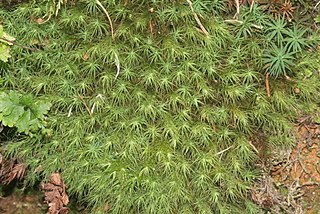
Bartramiales is an order of moss.
Breutelia grandis is a species of moss in the family Bartramiaceae. It is found in Brazil.
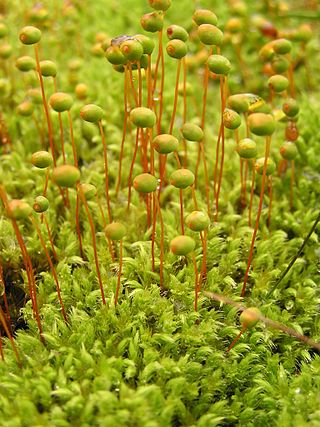
Bartramiaceae is a family of mosses belonging to the order Bartramiales.















